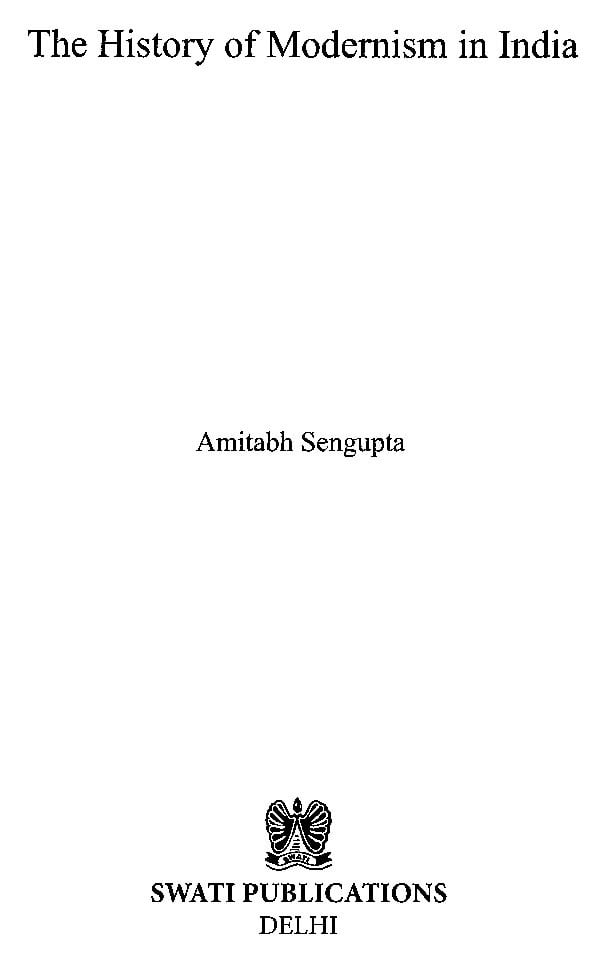
The History of Modernism in India
Book Specification
| Item Code: | AZG172 |
| Author: | Amitabh Sen Gupta |
| Publisher: | SWATI PUBLICATIONS, DELHI |
| Language: | ENGLISH |
| Edition: | 2021 |
| ISBN: | 9789381843338 |
| Pages: | 194 (Throughout Color and B/w Illustrations) |
| Cover: | HARDCOVER |
| Other Details | 11.00x9.00 inch |
| Weight | 1.14 kg |
Book Description
If all time is eternally present All time is unredeemable.
We cannot retrieve events from the unknown past, though everything is present in time. But specific interpretations of history can affect the present since it pushes society into an impasse. One such evidence is isolating the more extensive groups from the privilege of equality, in the name of Caste-division, an age-old process but giving way to Upper-Caste hegemony. The privileged Hindu society is indeed minuscule; while the more extensive sections of lower-Caste, Casteless, and the vast groups of Adivasi and tribes are perpetually deprived. Creating the majoritarian interpretation has a perceptual link to the Orientalist information and colonial Census. But it created categories and walls of protectionist lives. More than the idea of Hindu-India, the religious overture is becoming a threat to sustaining a homeland of the multi-religious, multiethnic communities that have precipitated through historical events. In this context, modernism, within the frame of equality, secularism, and democracy, becoming a counter-frame within the post-colonial realities, such as India's Partitions and continuous conflicts. Evidently, modernism has a hysteresis effect The Introduction surveys the essential elements within this frame: the colonial perception of the past vis-a-vis the new arguments emerging from discoveries and scientific data.
What remains a continuous query, is modernism new in India? There is a familiar assumption that the word modernism has linguistic and historical belonging to the west. So, it is provincialized and cannot happen in another place. Another view sees modernism as knowledge, and like all knowledge, it has a journey; it takes another shape in a new locality such as India. The book observes similarities and dissimilarities of modernism within the Indian context, but its authenticity is initiated through colonial experience. Modernism created a motion, cultural persuasion. individual search, global merging, and simultaneously, the elements of traditional conflicts.
**Contents and Sample Pages**















